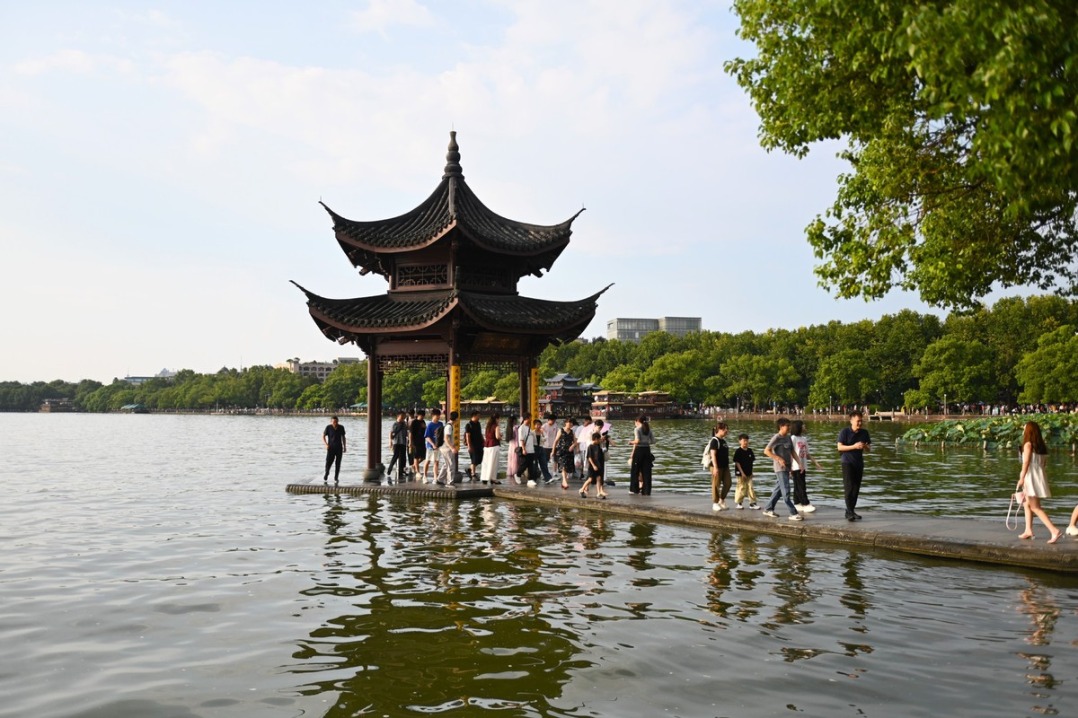Expansion slows to six-year low

Service industry's contribution higher than industrial sector's, 'showing obvious economic structural changes'
China's economic growth fell to a six-year low of 7 percent in the first quarter, buffeted by sharp declines in industrial production and real estate construction.
The lowest GDP reading since the 2008 global financial crisis has reached the "bottom line" that the leadership says it can tolerate, economists say.
However, the annual growth target mentioned in the Government Work Report allows for a figure of slightly below 7 percent, they say.
In the fourth quarter of last year, GDP grew 7.3 percent, and the overall rate for the year was 7.4 percent.
Figures published by the National Bureau of Statistics on April 15 show that industrial output growth dropped to a post-crisis low of 5.6 percent in March, down from 6.8 percent in the first two months of the year and from 7.9 percent in December.
Fixed-asset investment growth dipped to a historic low of 13.5 percent in the first quarter, compared with the average of 15.7 percent last year, showing further weakness in the manufacturing and property sectors.
Year-on-year retail sales growth in March slowed to 10.2 percent, the lowest level since March 2006, compared with 10.7 percent in the first two months.

The bureau said the service sector contributed 51.6 percent of GDP growth in the first quarter, up from 48.2 percent last year and 46.9 percent in 2013.
Bureau spokesman Sheng Laiyun said: "The Chinese New Year holiday in February accelerated expansion of the service industry. Its contribution is higher than that of the industrial sector, showing obvious economic structural changes."
The stock market benchmark, the Shanghai Composite Index, fell 1.24 percent on April 15 to end at 4,084.16 after climbing to a seven-year high of 4,175.49 before the close.
The Growth Enterprise Market fell 4.58 percent the same day, with more than 100 stocks on the Shanghai and Shenzhen exchanges dropping by the daily trading limit of 10 percent.
Qu Hongbin, co-head of Asian economic research and the chief China economist at HSBC, said: "The data suggest that underlying growth momentum has already reached policymakers' bottom line and warrants further policy easing.
"This is the first time in recent history that industrial production growth has fallen below GDP growth, suggesting that the burden of the slowdown has weighed more on this sector of the economy."
Since November, the central bank has cut the benchmark interest rate twice and lowered the reserve ratio requirement, the amount of cash that must be kept by commercial banks, in order to increase market liquidity and cut lending costs.
In a research note, Minsheng Securities Co said more infrastructure construction projects, focusing on transportation, environmental protection and Internet technology, will be speeded up to stabilize growth in the second quarter.
Project lists for the China-proposed Silk Road Economic Belt and 21st Century Maritime Silk Road are expected to be released soon, it said. Plans for the integrated development of the Beijing-Tianjin-Hebei region and for development of the Yangtze River Economic Zone may also be published in the second quarter, according to the note.
chenjia@chinadaily.com.cn
(China Daily Africa Weekly 04/17/2015 page22)






























